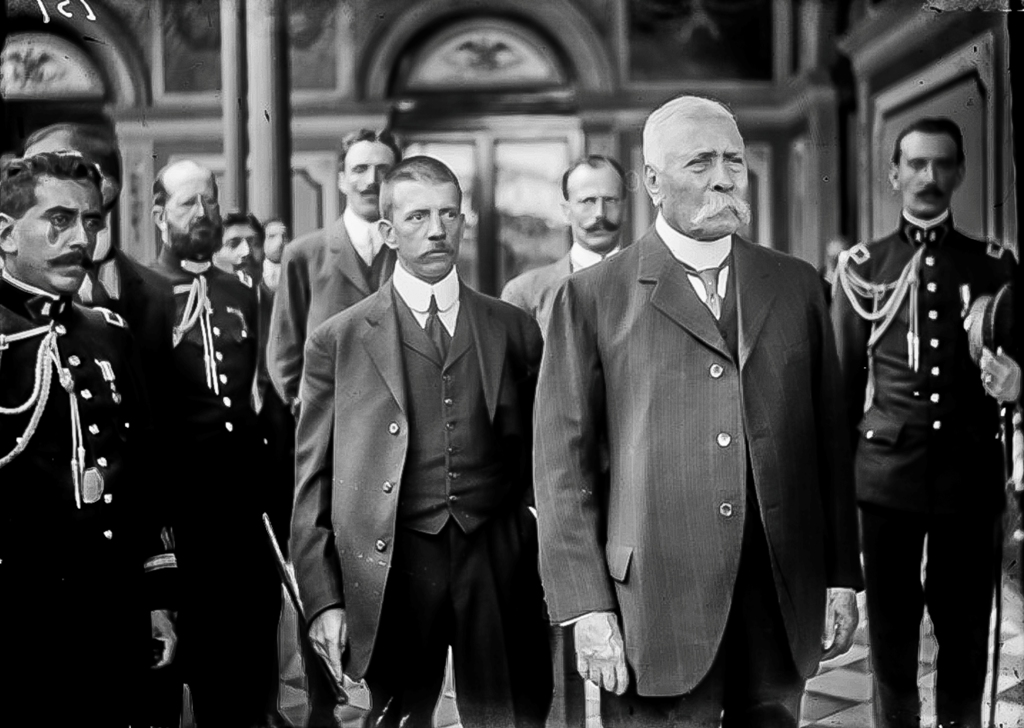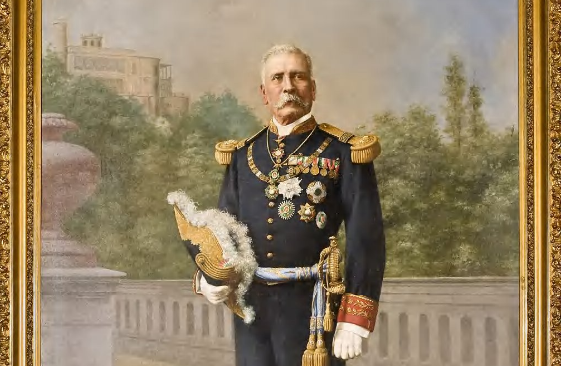
One of the most controversial characters in the history of Mexico, without a doubt, was former President Porfirio Díaz, who was in power for more than 30 years, so who was considered a dictator. Moreover, for this very reason, it was that the Mexican Revolution began, with which it was sought to remove him from power, something that was achieved.
Díaz's resignation came after the signing of the Treaties of Ciudad Juárez, which were a peace agreement between him and the next President Francisco I. Madero, and which was signed on May 21, 1911. This ended the struggle between the armed forces that supported Madero, and those that supported Diaz, which led to the conclusion of the initial phase of the Mexican Revolution.
The treaties stipulated that Diaz and Vice President Corral would resign at the end of May, and that Francisco León de la Barra would be appointed interim president during the next presidential elections. Four days after the agreement, on May 25, Diaz, who was approaching his 81st birthday, would sign his resignation.
Days later, on May 31, 1911, the former president would leave with his family from the port of Veracruz for France, on the SS Ypiranga ship, which would bring a definitive end to his dictatorship.

Unlike the life full of luxuries that Diaz had in Mexico, in Paris, where he lived his last years of life, he had a rather modest and unnoticed stay. As a residence, the former president chose a modest apartment that had a living room, two master bedrooms, as well as rooms for the service. Two women from Oaxaca used to clean and eat him in their rented apartment at 26 Avenida Bosque, now known as Avenida Foch, which is also a famous avenue that crosses the famous Arc de Triomphe.
The former president lived there because it was the only home he could afford, it was rented and supported by dividends from his shares in the Bank of London and Mexico, since his salary as a Major General was donated to reward the distinguished students of the Military College.
His stay in Paris was modest, and he took advantage of it to visit other European countries, such as Germany, Spain, Austria, Switzerland, and toured the northern part of France. However, due to his age and physical wear, they isolated him, so in the end he could only go for a walk to the Champs Elysées or the Bologna Forest, the latter, it is said, reminded him of the Chapultepec Forest. Both were located very close to his residence.
Another characteristic that marked the last years of the former president's life, was loneliness. On July 2, 1915, Diaz died, at the age of 84, in the city of Paris, France. He was accompanied, in his final hours, by his wife Carmelita Romero Rubio, his son Porfirio Diaz and his daughter-in-law.

Diaz always hoped to return to Mexico, and die in Oaxaca, where he was originally from. From Paris, he maintained contact with some Mexicans who informed him of the situation in the country, Madero's electoral triumph, the rebellions that Orozco, Zapata and Reyes initiated, and the participation of his nephew Felix against the Maderista regime. He also learned about Huerta's coup d'état, and the assassination of Madero and Pino Suárez.
It was at the end of 1914 that his health began to deteriorate, and some time later he could no longer go out on his usual routes. It is said that the last thoughts of the former president revolved around the figure of his mother, named María Petrona, and the idea of returning to Oaxaca, especially to the ranch of La Noria, which could not be fulfilled due to the situation in the country.
The funeral service was held in Saint Honoré d'Elau, a temple located on today's Raymond Poincaré Avenue, where his remains were deposited, but six years later, in 1921, they were exhumed and taken to the Montparnasse cemetery, where his wife Carmelita had a small chapel built for him.
To date, the remains of Diaz are found there, and in that same cemetery rest the bodies of other famous figures worldwide, such as those of Julio Cortázar, Jean Paul Sartre and Simone de Beauvoir.
KEEP READING:
Últimas Noticias
Debanhi Escobar: they secured the motel where she was found lifeless in a cistern
Members of the Specialized Prosecutor's Office in Nuevo León secured the Nueva Castilla Motel as part of the investigations into the case

The oldest person in the world died at the age of 119
Kane Tanaka lived in Japan. She was born six months earlier than George Orwell, the same year that the Wright brothers first flew, and Marie Curie became the first woman to win a Nobel Prize

Macabre find in CDMX: they left a body bagged and tied in a taxi
The body was left in the back seats of the car. It was covered with black bags and tied with industrial tape
The eagles of America will face Manchester City in a duel of legends. Here are the details
The top Mexican football champion will play a match with Pep Guardiola's squad in the Lone Star Cup

Why is it good to bring dogs out to know the world when they are puppies
A so-called protection against the spread of diseases threatens the integral development of dogs




